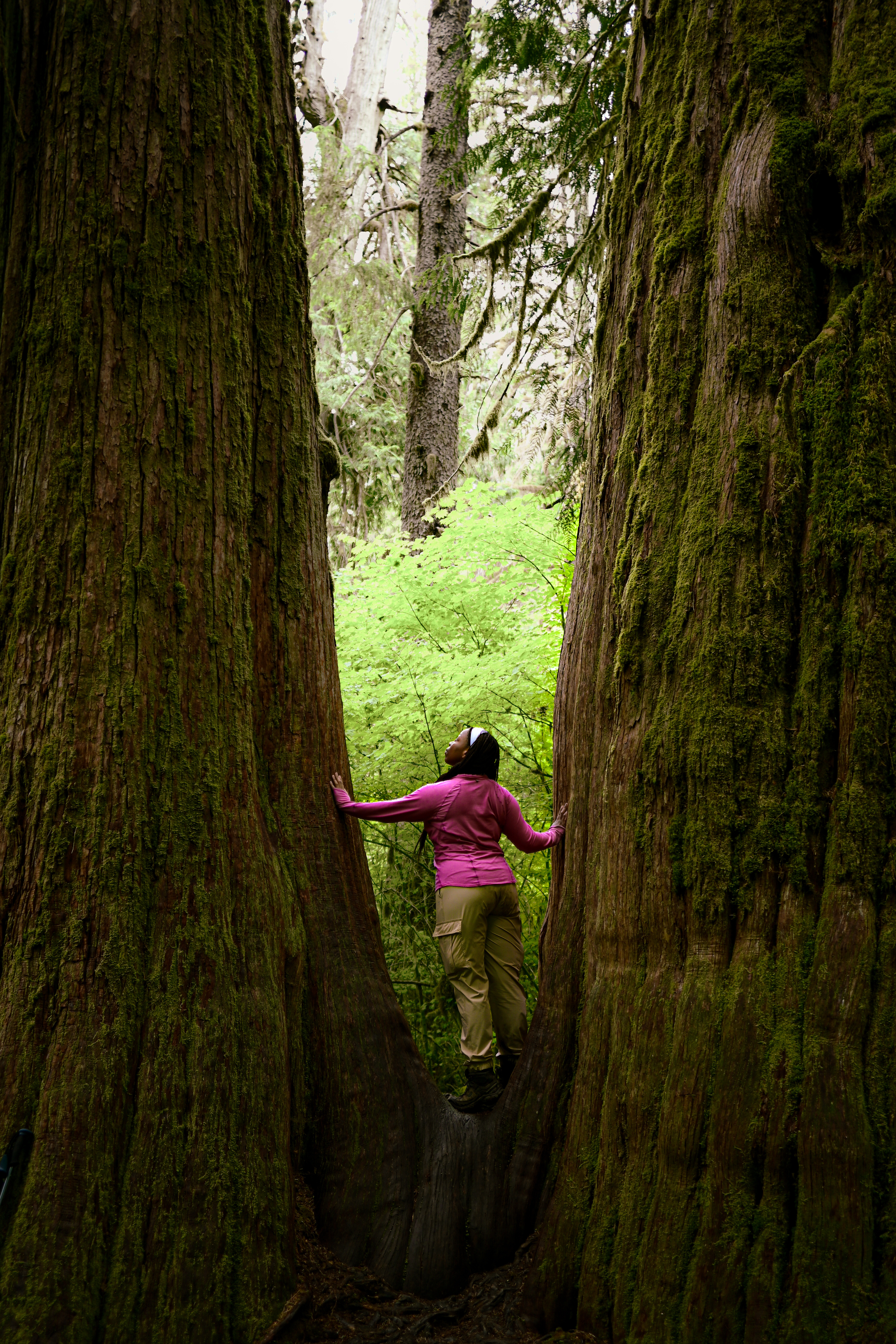
Scroll down
Students bond with ancient ‘beings’ in old growth forests of the Pacific Northwest
“I never even knew forests like these existed,” says Northeastern student Genevieve Savage.
Genevieve Savage says she wanted to reconnect with nature after moving from a “teeny little” hometown on the big island of Hawaii to the bustle of Boston.
In a Dialogue of Civilization in the old-growth forests of the Pacific Northwest, Savage found that connection.
“I never even knew forests like these existed,” says Savage, who is entering her second year at Northeastern and studying English and political science. “Little did I know how exposure to natural beings thousands of years older than myself would humble me and serve as a lifelong inspiration.”
Dialogue of Civilizations courses offer students an immersive global experience with Northeastern faculty, bringing students to more than 80 different countries from Iceland to Japan to Mexico, just to name a few.
“We really talk through and try to come and speak to people coming at the issue from all sides.”
Andrew Haile,
Dialogue co-leader and assistant teaching professor at Northeastern University School of Law

In the recent Ancient Forests dialogue, students explored the legal and philosophical frameworks for protecting “old-growth” forests — woods that have not been logged since European settlement of North America. Combining philosophy, law and policy along with the perspectives of those who live in and need such forests including local First Nations, loggers and environmentalists, the dialogue offers students a chance to understand the debates concerning old-growth forests in North America.
“The issue of old-growth forests — which probably seems foreign or unknown to people on the East Coast — is hugely controversial in the Pacific Northwest,” says Andrew Haile, assistant teaching professor at Northeastern University School of Law, who co-led the dialogue.
He calls the controversy — which dates to the “timber wars” of the 1970s through 1990s — an “introduction to a lot of different culture wars we have fought and are fighting as a society.”
“We really talk through and try to come and speak to people coming at the issue from all sides,” Haile continues.
Those multiple perspectives have been inspiring for Zora Hynnek, a rising second-year student studying environmental studies and international affairs.
“I’ve learned that conservation can be really complicated because there are always multiple perspectives,” Hynnek says. “I also learned that we shouldn’t treat certain groups as monoliths in how they view the use of natural resources, even if they seem homogenous in other ways.”
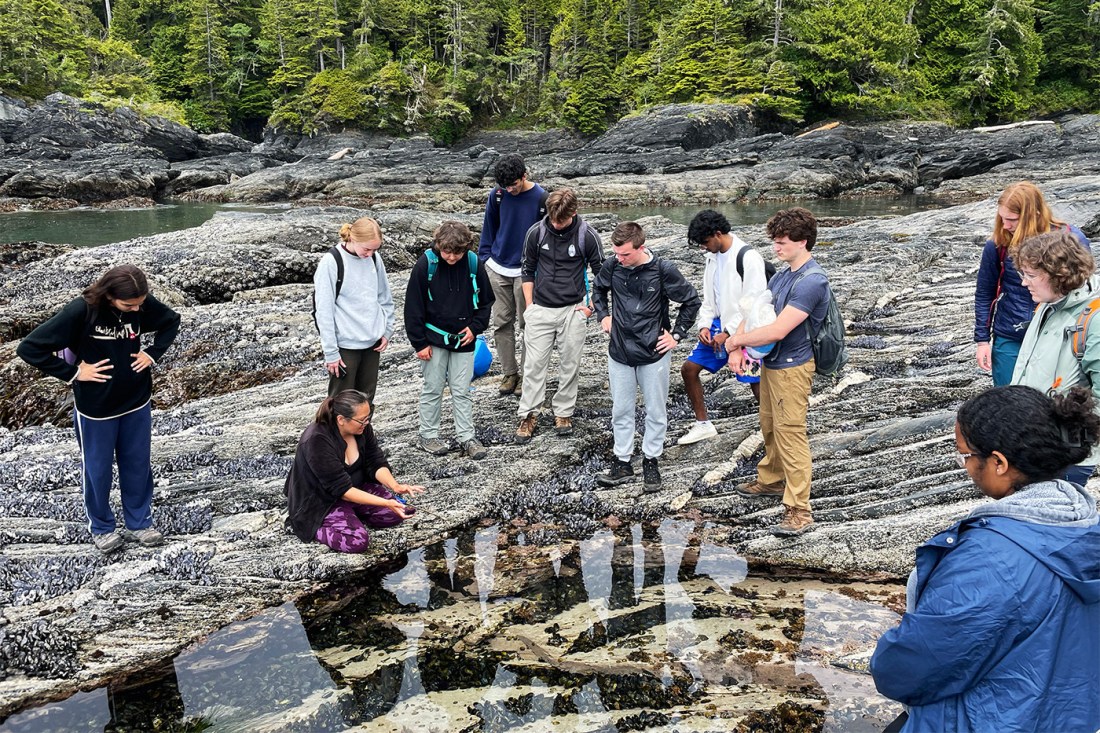
“We’re going out into the world and experiencing the forest we’re talking about and talking to real live people who are interacting with that forest and have a relationship with that forest.”
Meica Magnani,
Dialogue co-leader and assistant teaching professor of philosophy and computer science
There’s also more than just talking about the issues. Students on the dialogue spend time in the forest as well; and the trip culminates in a five-day backpacking expedition through Olympic National Park.
Dialogue co-leader Meica Magnani, assistant teaching professor of philosophy and computer science at Northeastern, says the dialogue offers students a tangible connection to different philosophies concerning the forest.
“Typically in a philosophy class, the reading and discussion offer students new ways to think about themselves and to analyze new responsibilities and their place in the world,” Magnani says.
“In this course, what is so exciting about it, is all that comes alive — we’re going out into the world and experiencing the forest we’re talking about and talking to real live people who are interacting with that forest and have a relationship with that forest.”
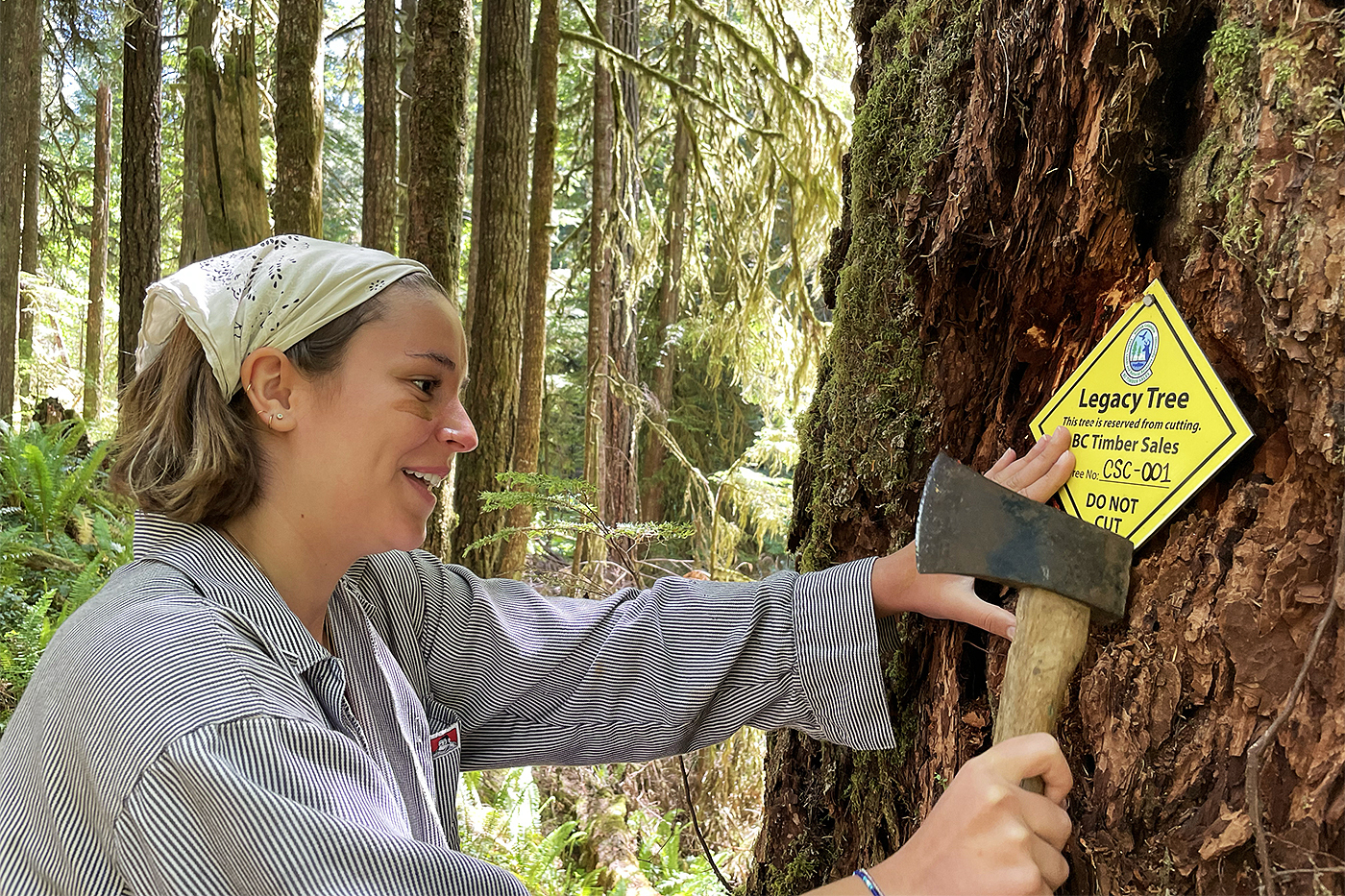
Marguerite Yee, who was a student on the dialogue in summer 2023 and returned this year as an assistant, says these “lessons that take place out of the classroom are as much cause for discourse as the lectures.”
“The interactions with people on every side of the debate, getting told to basically ‘go play’ out in the woods and discovering some plant you didn’t know but now need to research, seeing the culturally modified trees up close and realizing new questions — this dialogue pushes you to be yourself in the sense that your unique perspective is necessary to bring new discussions to the table,” Yee says. “It fosters a deep connection to the course material in a way that I think most classes aim for and miss.”
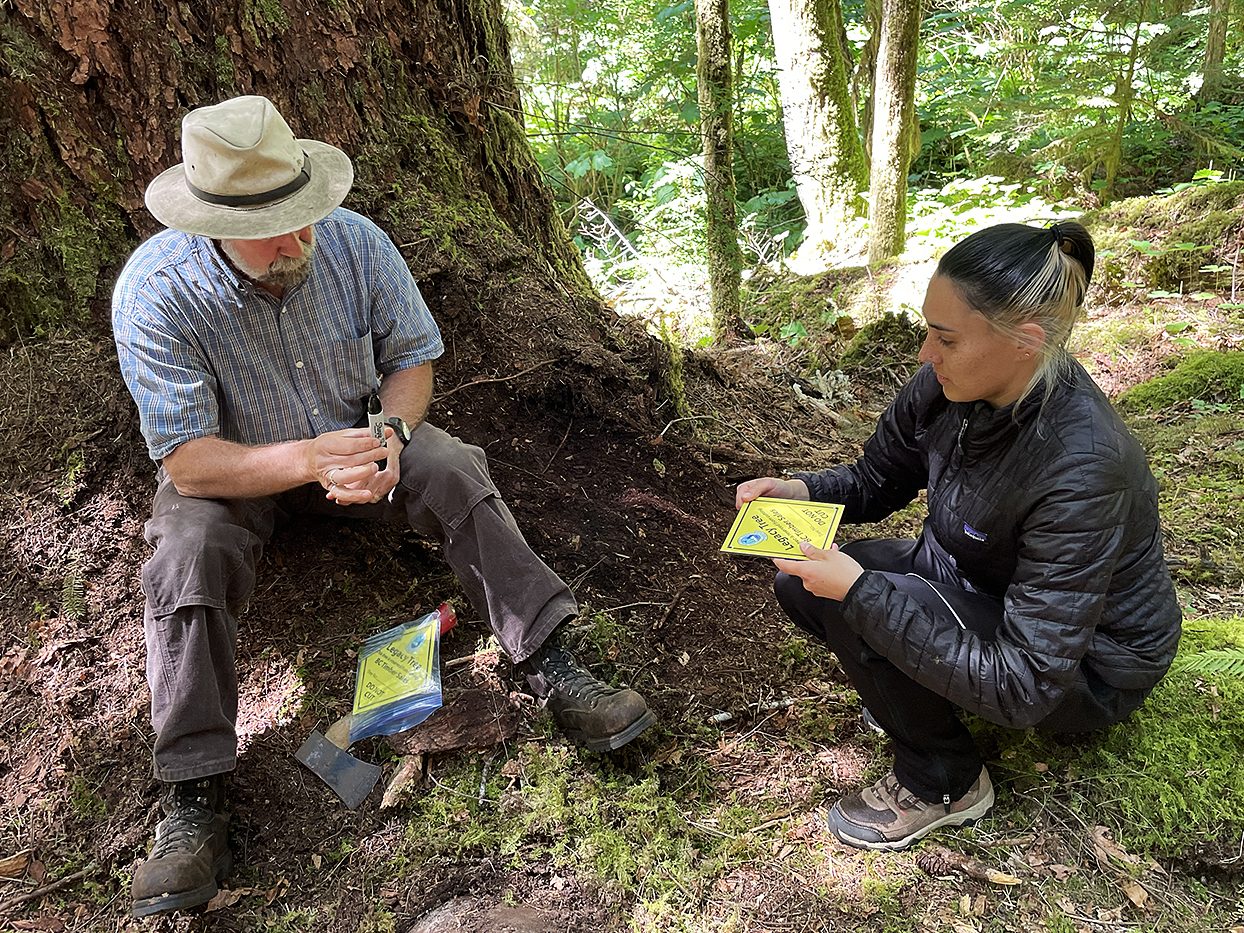
It also fosters a deep connection with fellow students.
Yee says students bond over days-long hikes sans phones and homework assignments, supporting each other during the difficult times and celebrating birthdays in the good times, and experiencing the same commutes on “clattering logging roads.”
“You might think that would stymie discussions, but instead everyone has a different detail they pull from the experiences and we all share with one another,” Yee continues. “Our conversations don’t end in the classroom.”
And it fosters bonds with professors.
“How many times have you watched your professors chop up a fallen tree to get the bus through to see a specific big tree?” Yee asked. “Well, we have.”
But, as impressive as seeing
professors chopping wood
might be, the biggest sight
is the trees themselves.

“Only the lucky
few have survived
human intervention.”
“It’s miraculous to think that
the length of our own life is miniscule
in comparison to this tree’s lifetime.”
– Zora Hynnek, second-year Northeastern student
“I never even knew forests like these existed….Little did I know how exposure to natural beings thousands of years older than myself would humble me and serve as a lifelong inspiration.”
Genevieve Savage,
second-year English and political science student
The students learn that the trees can do more than impress, however, they can inspire.
Yee says that the dialogue inspired her to think about sustainability in architecture.
“It helped me be more mindful, specifically about my material choices going back to architecture,” Yee says. “I’ve learned how to trace a material to its source and mark all the byproducts along the way.”
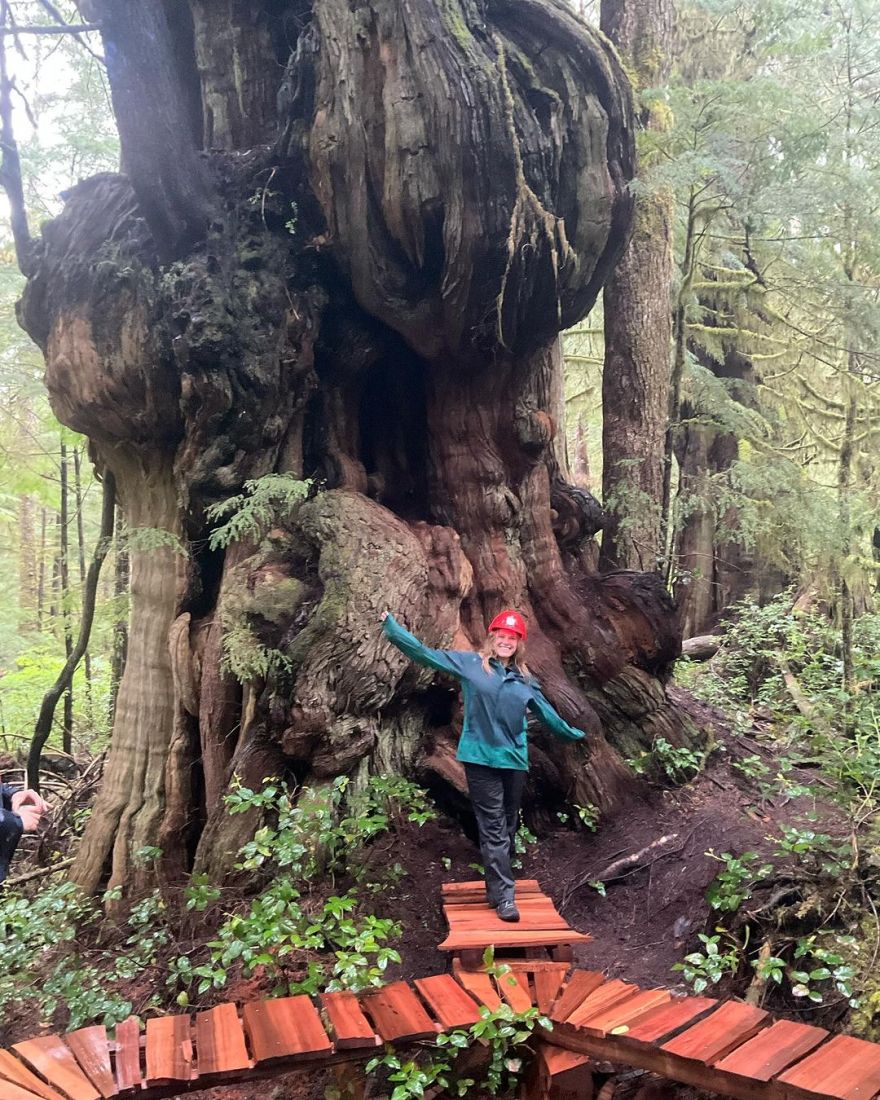
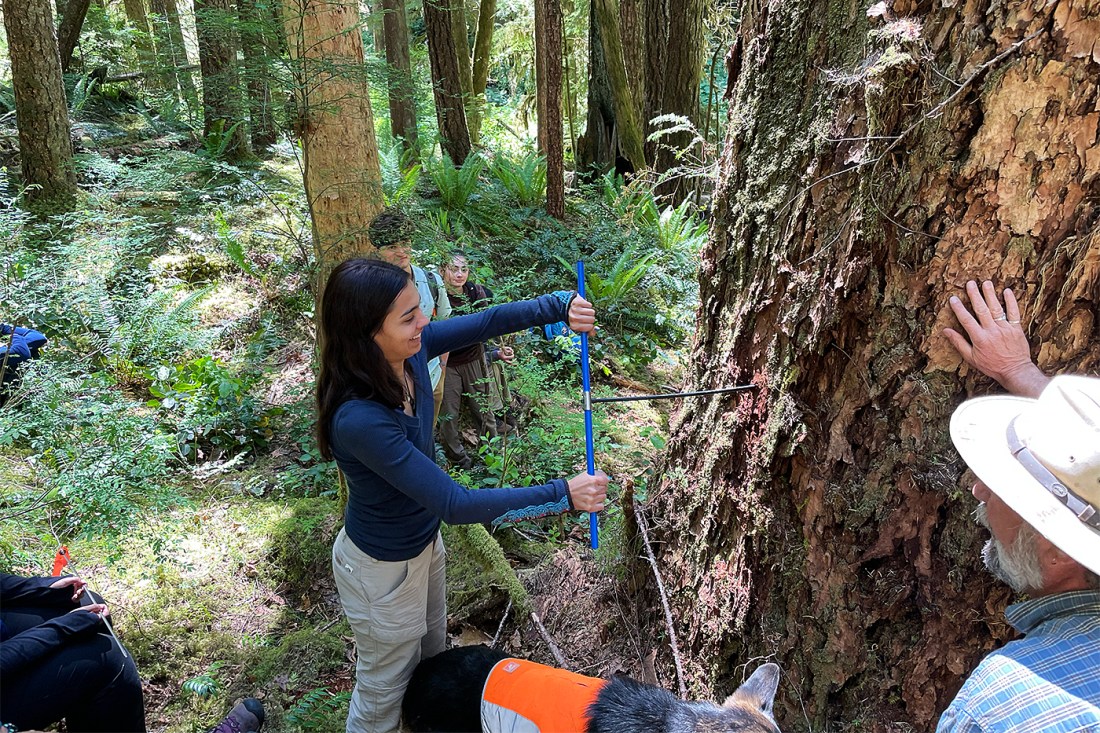
Savage also says that learning about different countries’ approaches to environmental policy has led to a focus for her post-Northeastern plans.
“Some other countries have the inherent worth of the natural world built into their environmental policy,” Savage explains. “When I graduate and head to law school, I’m interested in studying how we can shape our own country’s legal system to afford inherent worth to our ancient forests and ecosystems.”
Cyrus Moulton is a Northeastern Global News reporter. Email him at c.moulton@northeastern.edu. Follow him on X/Twitter @MoultonCyrus.
Design and development by Marin Carroll/Northeastern University.
Lede image photo by Andrew Haile.
Illustrations by Renee Zhang/Northeastern University.
